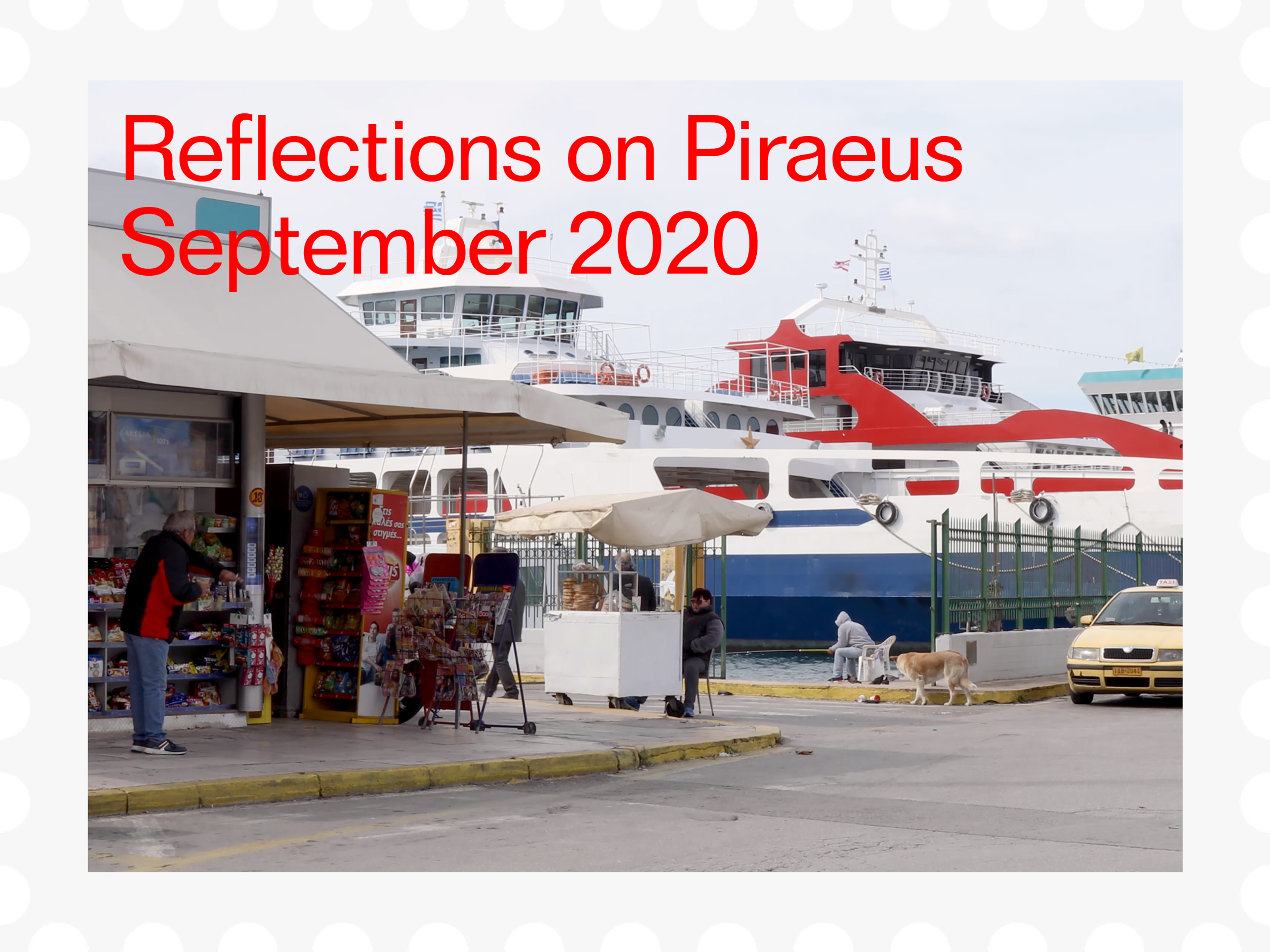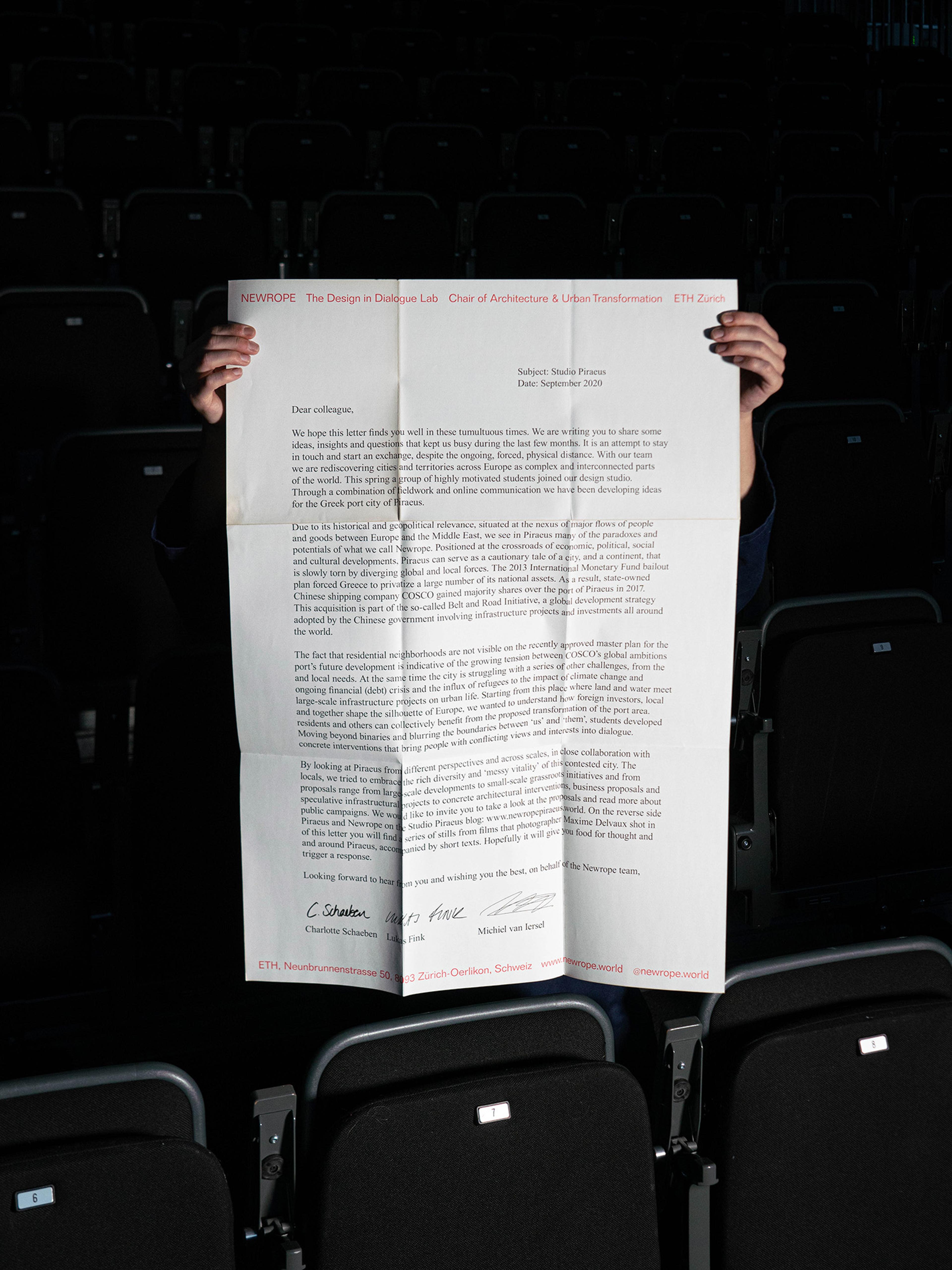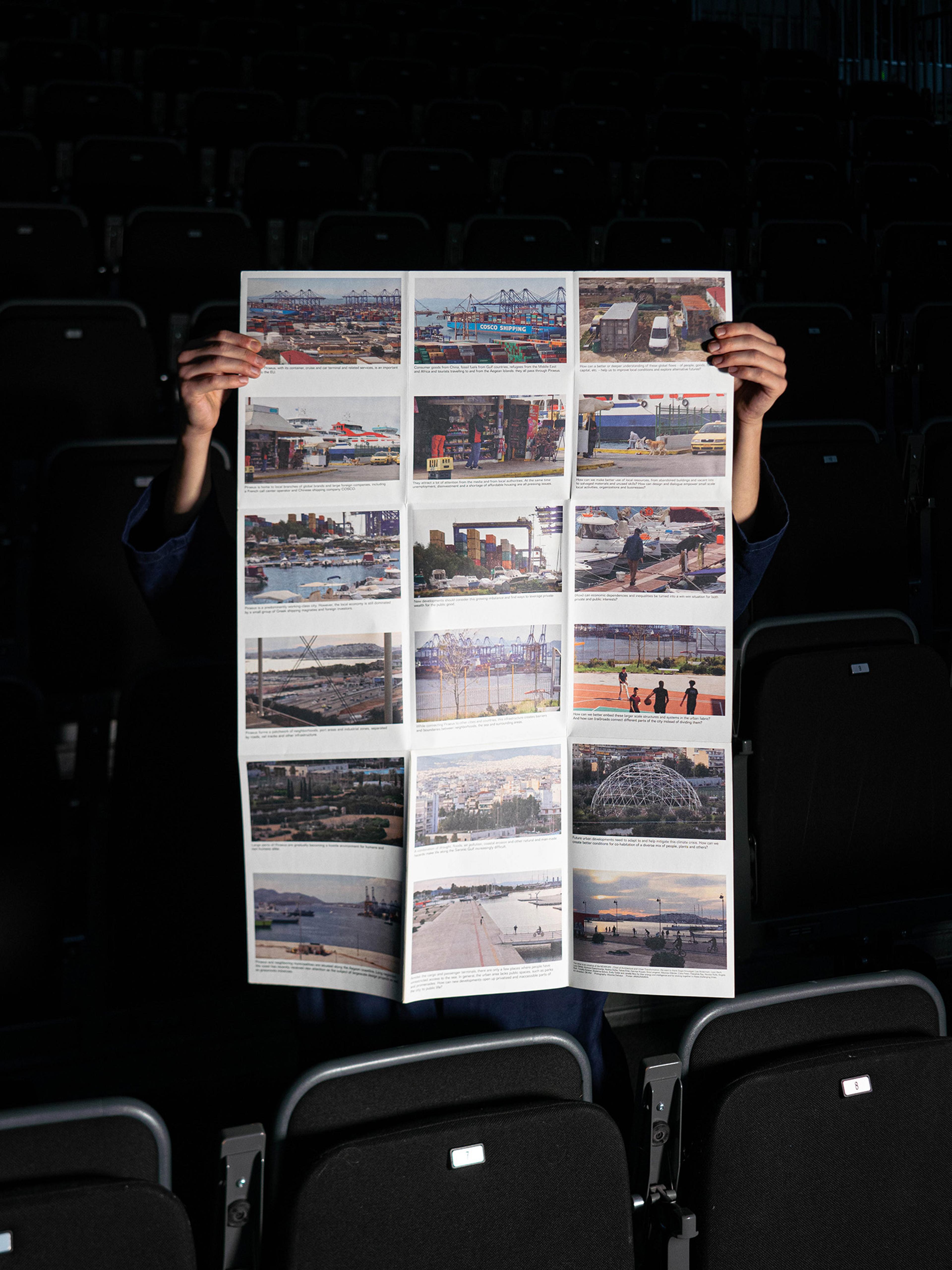Reflections on Piraeus
Following Studio Piraeus, the NEWROPE team wrote this letter to revisit the observations and thoughts inspired by a semester of intensive involvement with Piraeus alongside the students
“Dear colleague,
We hope this letter finds you well in these tumultuous times. We are writing you to share some ideas, insights and questions that kept us busy during the last few months. It is an attempt to stay in touch and start an exchange, despite the ongoing, forced, physical distance. With our team we are rediscovering cities and territories across Europe as complex and interconnected parts of the world. This spring a group of highly motivated students joined our design studio. Through a combination of fieldwork and online communication we have been developing ideas for the Greek port city of Piraeus.
Due to its historical and geopolitical relevance, situated at the nexus of major flows of people and goods between Europe and the Middle East, we see in Piraeus many of the paradoxes and potentials of what we call Newrope. Positioned at the crossroads of economic, political, social and cultural developments, Piraeus can serve as a cautionary tale of a city, and a continent, that is slowly torn by diverging global and local forces. The 2013 International Monetary Fund bailout plan forced Greece to privatize a large number of its national assets. As a result, state-owned Chinese shipping company COSCO gained majority shares over the port of Piraeus in 2017. This acquisition is part of the so-called Belt and Road Initiative, a global development strategy adopted by the Chinese government involving infrastructure projects and investments all around the world.
The fact that residential neighborhoods are not visible on the recently approved master plan for the port’s future development is indicative of the growing tension between COSCO’s global ambitions and local needs. At the same time the city is struggling with a series of other challenges, from the ongoing financial (debt) crisis and the influx of refugees to the impact of climate change and large-scale infrastructure projects on urban life. Starting from this place where land and water meet and together shape the silhouette of Europe, we wanted to understand how foreign investors, local residents and others can collectively benefit from the proposed transformation of the port area. Moving beyond binaries and blurring the boundaries between ‘us’ and ‘them’, students developed concrete interventions that bring people with conflicting views and interests into dialogue.
By looking at Piraeus from different perspectives and across scales, in close collaboration with locals, we tried to embrace the rich diversity and ‘messy vitality’ of this contested city. The proposals range from large-scale developments to small-scale grassroots initiatives and from speculative infrastructural projects to concrete architectural interventions, business proposals and public campaigns. We would like to invite you to take a look at the proposals and read more about Piraeus and Newrope on the Studio Piraeus blog: www.newropepiraeus.world. On the reverse side of this letter you will find a series of stills from films that photographer Maxime Delvaux shot in and around Piraeus, accompanied by short texts. Hopefully it will give you food for thought and trigger a response.
Looking forward to hear from you and wishing you the best, on behalf of the Newrope team,
Charlotte Schaeben
Lukas Fink
Michiel van Iersel”
[Subject] Studio Piraeus
[Date] September 2020
[Authors] Lukas Fink, Charlotte Schaeben, Michiel van Iersel


